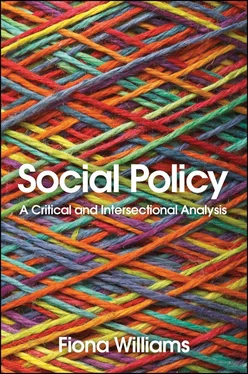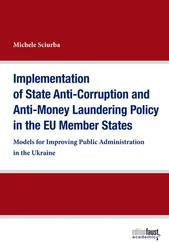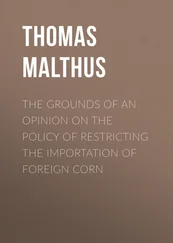Further, measures to prevent global warming can also be disadvantageous to particular groups. For example, biofuel production as a replacement for oil has created greater competition for marginal agricultural land and has deprived women, especially indigenous women, of their livelihoods (Women’s Environmental Network 2019). These forms of exploitation, expropriation and expulsion are mirrored in the developed world. Carl Anthony’s book The Earth, the City, and the Hidden Narrative of Race (2017) documents the ways in the US in which racial and planetary subordination and racial and environmental injustice go hand in hand over time. This moves from the colonization of both peoples and the earth to the ways in which gentrification, expulsion and the deregulation of water and waste hit minority communities (Anthony 2017, cited in Manchanda 2019; see also Pulido 2016).
‘Environmental racism’ has been used to describe the ways in which, in Europe, marginalized and minority groups are disproportionally subjected to environmental hazards such as living in proximity to toxic waste, or having limited access to clean air, water and other natural resources (Vincze 2013). This has particularly affected the siting of Roma and Traveller people. In the UK, one report found that minority ethnic groups, by virtue of their place of residence near main roads and motorways, are exposed to 17.5 per cent higher concentrations of dangerous particulates (ENDS Report 2009: §53).
In 2019, the global pandemic of the Covid-19 virus brought the deadliest of a series of epidemics and is another form of environmental risk to sustainability. It represents a micro-biological facet of the macro-exploitation of resources affecting human health and capacity for production, and it bears similar challenging features, outcomes and lessons. It is associated with globalization, flourishing in high-density urban areas in which 68 per cent of the world population now lives (WEF 2020a). Some epidemics, such as Zika, travelled on the climate-changing winds of El Niño. Covid-19 respects neither class nor borders, yet is more deadly for older and physically vulnerable people and more devastating for socio-economically disadvantaged groups or racial minorities (see chapter 4). As with the financial crisis, the markets, always focused on the short-term, were unable to stop themselves from falling. Like climate change, the pandemic presents random, unpredictable risks. This challenges the basis of welfare states that are built on a range of relatively predictable risks. Both require robust multi-scalar global, national and local governance for interdependent political, public and expert co-operation to develop social and physical protection.
In so far as the mitigation of climate change challenges the continuation of consumerism, economic growth and exploitation of the earth’s resources, it also challenges the assumption, first, that the welfare state is afforded and legitimated only through capitalism’s commitment to economic growth; and, second, that mitigation and adaptation policies require multi-scalar forms of co-operation and expenditure (from global to local) which profoundly tax how we think about the relations between ‘overdeveloped’ and developing worlds and the development, implementation and funding of a future eco-social policy (Fitzpatrick 2014; Gough 2017). Third, climate change has constituted a challenge to anthropocentric relations of power: the assumed right of the human world to dominate and exploit the non-human world, demanding instead not only strategies to mitigate the effects of climate change but a new way of being with the interdependencies of the ecosystem.
The racialized crisis of borders
It is in the identification of the contemporary conditions of transnational borders as a crisis that the notion of ‘crisis’ becomes tricky. To call the flight of populations from wars, fragile states, ethnic conflicts, collapsing economies, environmental disasters, crime, violence, and the poverty of geo-political inequalities a ‘migrant crisis ’ or a ‘refugee crisis ’ is to risk misrecognition of the dynamics that have contributed to the problems experienced by migrants, particularly those regarded as ‘unskilled’, asylum seekers and refugees. These were the terms that dominated media and political discourses around the movement of Syrian refugees and asylum seekers in the summer of 2015 and continued to do so long after, weaving in and out of a growing ethno-nationalist populism. The Daily Mail warned repeatedly of a migration and/or refugee ‘crisis’, associating it with illegality, criminality and Islam, a phobia that has become increasingly gendered (Gray and Franck 2019). In so far as ‘crisis’ implies danger and difficulty, then these discourses signify this phenomenon as a disaster and danger not for those risking their lives but for sovereignty, governments and resident populations of migrants’ European destinations or, for the US, by Muslims and those crossing the Mexican border. Where Trump accused Mexican immigrants of being criminals and rapists in 2018 (Jacobs 2018), Viktor Orbán, the Hungarian prime minister, claimed a clear correlation between ‘illegal’ immigration and terrorism. In both cases the material construction of borders became ‘spectacles’ of mythical threats to the nation and dehumanization and exclusion from it (Cantat and Rajaram 2019).
Such representation detracts, first, from the experiences and suffering experienced by those who are migrants, refugees or asylum seekers, including death at sea or suffocation in the backs of lorries. By 2016 over 3,000 refugees attempting to enter Europe by sea had drowned; worldwide it was over 4,000 (IOM 2016). Second, the idea of ‘crisis’ as portending mass migration exaggerates both the impact and the long history of migration into Europe. Between 2011 and 2016, 884,462 asylum applications were made across Europe. In fact, general international migration started to slow down a little after 2007 (OECD and UNDESA 2013) at the same time that refugee migration started to accelerate. There were 11.7 million refugees under the UNHCR’s mandate in 2013 – 1.2 million more than the previous year (UNHCR 2013). While some countries (Germany, Sweden) took proportionately more and some less (Britain took 0.06 per cent of its total population), the average amounted to only 0.25 per cent of the total European population, an easily absorbable number (figures cited in Bhambra 2017: 396–7). Indeed, immigration and asylum seeking have historically been relatively steady phenomena in Europe. Third, the crisis panic of today correlates migrants with danger, illegality, conflict, violence and terrorism. In doing so it has legitimated the ratcheting up of coercive border controls, detention and deportation policies, which now characterize immigration controls across the world: the precaritization of work and citizenship together (Geiger and Pécoud 2010). As Yuval-Davis and her colleagues argue, bordering has re-emerged as ‘a principal organizing mechanism in constructing, maintaining and controlling social and political order’ (Yuval-Davis et al. 2019: 5). As such, it affects all social groups and not simply migrants and minority groups. At the same time, it is the restrictive legal and social policies of immigration that lead to the desperate conditions in refugee camps, such as Sangatte on the French coast, and, as Alex Sager argues, that create the illegalization of immigrants and the so-called crisis:
Illegalization is closely connected to securitization in which migration is treated as primarily a security issue. The language of crisis contributes to securitization so that restrictive, coercive border controls become the norm. Measures such as offshore detention of people seeking asylum or the repatriation of refugees to more dangerous regions become more palatable when they are seen as responding to a crisis. (Sager 2020: 15)
Читать дальше












